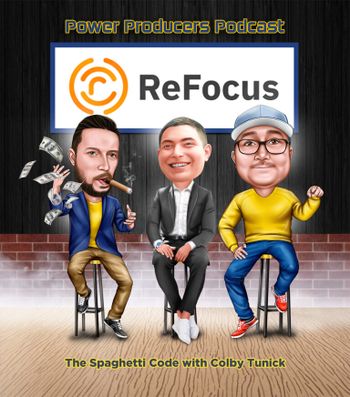When you think of a company that you love, who comes to mind?
It’s probably a company that you are so loyal to that it would take a seismic shift to get you to move to a competitor. As far as love goes, you probably can only think of a handful of companies that you would describe like that. But have you ever thought about why that is?
In this article, we will break down the three levels of customer retention and what every company can do to move closer to the customer.
Not so long ago, in a place close to here…
You love and are passionate about the companies you have a personal connection with.
Mirriam-Webster describes love as “strong affection for another arising out of kinship or personal ties.” In the age of self-service, it's difficult to remember the days when companies were intensely personal. We used to buy products and services face-to-face with a company’s representative. Often, this individual was already in the buyer’s social circle. This meant that the buyer made their buying decision based on their personal connection, which the company ultimately benefited from in customer loyalty. It is much harder to switch to a competitor when a buyer has to have a conversation with someone they care about.
When things digitized in the 1980s, companies cut front-line staff and automated their jobs with computers. While this was an effective cost-cutting strategy, building a personal relationship with each customer became harder. Over time, companies lost touch with prospective and existing customers.
You can directly correlate the rise of Google and its ads in the early 2000s with companies trying to become top-of-mind again after years of neglecting the relationship with customers. Businesses became removed from people’s social circles, so Google allowed them to do the next best thing: targeted advertising in the comfort of people’s homes. Digital advertising replaced the door-to-door sales force, but within 10 years, ad blockers reduced the effectiveness of ad marketing.
Just as ads supplanted local representatives, ads are giving way to the next evolution of ‘relationship building at a distance’: content marketing. Content marketing is highly effective and works by building trust between buyers and sellers. Appealing to your logic, rather than emotion, companies can build a connection with those they want to purchase their products. However, just like with digital advertising, there will come a time in the not-so-distant future when content marketing stops being effective.
If introducing new technology to replace old technology to replace interpersonal connections in sales is feeling circular, it is. But no marketing will ever supersede the trust built when people bought products and services from people in their social network. The best this technology can do is come close.
The reason is that current marketing (and its supporting technology) takes a cookie-cutter approach to building trust. While scalable, you are only ever creating content that will resonate with a subset of customers.
The customer loyalty pyramid
We started this article by asking you to identify a company that you love. But now we want to tweak the question - how do you feel about the rest of the companies you frequent or buy from? What emotions come to mind?
If you are not feeling anything, that's quite normal, as most companies are so disconnected from their customers, that indifference is the primary emotion.
The customer loyalty pyramid has three tiers, divided 80%, 15%, and 5%. The bottom, where most companies live, is the ‘Service’ tier. These companies compete for loyalty based on the service they provide and are the most replaceable. Customers compare these companies with indifference, and the non-existent relationship between them and their buyers is purely convenience-based.
Geico is an example of a company in this tier. Buyers decide to purchase from them based on price, which is also the defining characteristic of companies in this tier. Because of the strict transactional relationship between these companies and their customers, as soon as a lower price is available from a competitor, the customer will churn.
We reserve the middle ‘Value’ tier for companies that lead with corporate values that align with those of their buyers. These companies have a stronger pull because buyers ‘like’ these companies. Customers prefer to buy from companies that align with their values. There are fewer companies in this tier and those that are, maintain a measure of differentiation between their direct ‘Value’ competitors and those in the lower ‘Service’ tier.
An example of a company that now lives in ‘Value,’ but was recently in ‘Service’ is Southwest Airlines. They rejuvenated their corporate brand, which is encompassed in their move from a slogan of ‘THE Low Fare Airline’ to their values-based ‘One Heart.’ By aligning with the values of customers who want excellent service and cheap fares, they have attracted a wide fan base that pays more for their services than their lower-cost competitors. Their retention is much higher and customer lifetime value is longer than other airlines in the ‘Service’ tier.
An interesting phenomenon is that while companies can move from the ‘Service’ tier to the ‘Values’ tier, it is extremely difficult to move from ‘Values’ to ‘Interpersonal Relationship’ (it is possible to drop, though). The handful of companies in the top tier started there. A little later in this article, we will unpack why that is.
The interpersonal relationship tier is exactly that - buyers feel that they have a personal connection beyond service or values. Another way to think about it is customers who buy from companies in this tier may feel that they have something at stake. Because of that loyalty, customers will stay indefinitely. So how do you get yourself into the top category?
Moving toward the customer
Jeffrey Hall, a communications professor at the University of Kansas who researches interpersonal communication, calculated just how long you have to spend in the tunnel before you reach the light at the end: On average, it takes about 50 hours of time with someone before you consider them a casual friend, 90 hours before you feel comfortable upgrading them to just “friend,” and around 200 hours of quality time before you’d consider the two of you to be close. These interactions used to be made by the company’s sales representatives, who would build trust over hundreds of hours.
We use how normal social interactions work between two people and apply it to building relationships between companies and their buyers. By merely existing, companies are in the ‘Service’ tier. Moving to the ‘Values’ level takes at least 90 highly personalized interactions. As mentioned above, it is almost impossible to move from ‘Values’ to ‘Interpersonal Relationship’ - doing so requires rebuilding the relationship from scratch. What is easier is starting with personal relationships.
Machine Learning to Building Loyalty
Replicating a face-to-face relationship using digital technology is difficult. Relationships are highly variable, and that variability makes it difficult for most software to adapt to an individual. Salespeople used to have intimate knowledge of someone’s life and with that knowledge, market-relevant products and services to help them.
Machine learning (ML) allows us to communicate with customers much the same way as if they had a personal relationship with the company’s representative. Better yet, ML can signal to account managers and the retention desk when a personal touch, in the form of a text, phone call, or in-person visit, is necessary. In that same vein, ML can provide recommendations for what a customer’s real-time needs are, and what messaging would be most effective in addressing their concerns.
This technology pays dividends when it comes time for retention. Regardless of why someone buys from you, it's 5-25x cheaper to keep their business than to sell to a new customer. Rather than sending automated, depersonalized communications, further the personal relationship that a buyer has with your company by providing them with relevant and timely information.
Conclusion
It is becoming harder to compete on service and values alone, as these customers have proven that price sensitivity is their most important consideration. If this continues, companies will be forced to cut additional costs (likely in customer service) in order to offer lower and lower prices. Competing on the personal relationship tier isn't just about building customer loyalty on a more competitive level - it's about building customer loyalty that is out of this universe.
Building interpersonal relationships with customers at scale is challenging. It requires a different approach, strategic outlook, and the adoption of novel technology like machine learning. For most companies who are used to competing on cost alone, the investment required to compete in the relationship tier may seem staggering. But for the companies that are already there, the results (and dividends) more than pay for themselves.







